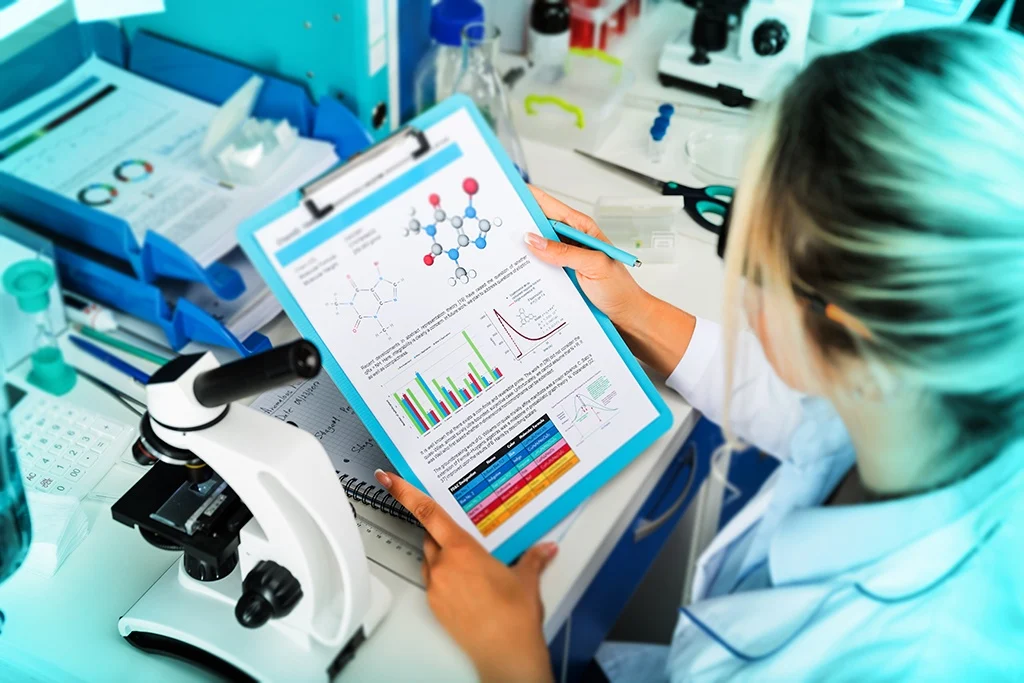Welcome to C-Trials Global Inc.
CT/Bioequivalence/PKPD Study Monitoring

CT/Bioequivalence/PKPD Study Monitoring
The rationale of Clinical Trial/BA-BE monitoring/Patient based PK studies is to guarantee that the trial data is meticulous, complete and authentic, and in compliance with ethical and scientific standards. The attributes of monitoring of BA-BE/Clinical Trials/Patient Based PK Studies are the base of adequate execution and the success of each clinical trial depend upon it. Perfect monitoring is crucial for a clinical trial, both to protect the integrity of scientific data and to yield valid Regulatory data. To ensure that this data adheres to protocols and international guidelines, the need of the hour for organizations is to opt for an expert medical writing partner who is well-versed with audit and monitoring.
C-Trials Global team has excellent experience and expertise in risk-based clinical trial monitoring that ensures scientific excellence and data integrity.
C-Trials Global Clinical engages a divergent range of specialized skilled staff to perform all aspects Monitoring and Site Management. C-Trials Global Clinical has the extent to facilitate clinical services throughout in most corners of the globe.
Our operational personnel are based globally. We aim to minimize travel, boost support for project teams and importantly advantage local knowledge of the clinical research and regulatory environments.
C-Trials Global offers an experienced team of regionally based monitors, all with top in class monitoring experience in all therapeutic areas that includes oncology, gynecology, Dermatology, respiratory, orthopedic etc. Our global Monitors/Auditors/clinical research associates (CRAs) focus on developing strong site relationships while ensuring adherence to data quality, subject safety, and early issue resolution throughout the course of the trial. Comprehensive monitoring plans are crafted to address trial complexity and sponsor requirements, and often combine traditional monitoring visits with robust site management and remote monitoring tactics.
C-Trials Global has experience of Monitoring more than 1000 BA/BE studies and including PKPD and PD trials/Post Marketing Surveillance.
We offer independent Clinical Trial/BA-BE/PKPD study monitoring visits – such as

Site Initiation Visits

During study interim monitoring visits (Check in, dosing, vitals and post dose activities)

Site Close Out Visits (once CSR is ready for review)
We offer independent Bio-analytical monitoring visits – such as

In process Bio-analytical Monitoring

Retrospective Bio-analytical Monitoring
Our Monitoring process includes
- Quality source data verification
- Quality review of monitoring reports
- CRO/Site feasibility
- Expertise regulatory submissions
- ICH GCP compliance
- Monitoring plans (Based on Risk-Based Monitoring Approach)
- Sponsor comment/Query resolution
- On Site training and Management
- IMP accountability
- Site management support and documentation
- Medical monitoring

We’re in the best ground for clinical monitoring – precisely. Our teams all have local knowledge and language familiarity so they understand the distinction involved in each market; from regulatory differences to cultural differences. We initiate projects expeditiously, with teams prepared and accessible to advance the process complete.
Flexile Monitoring approach
We are constantly adapting and finding new, innovative ways to deliver. Always one step ahead, we’re all set for the ICH-GCP E6 and fully prepared for guideline changes anticipated recently.
Our flexible monitoring platform handles risk-based monitoring, targeted monitoring and centralized monitoring.
Frequently Asked Questions
Conventional bioequivalence studies for USFDA, EMA, MHRA,ANVISA, Health Canada, TGA, Chinese FDA, PMDA, GCC, New Drugs and Clinical Trials Rules, 2019 – Amendment- 2022- CDSCO, Applicable Regulatory Guidelines an open-label, randomized, crossover design, which is detailed in the study protocol. Participants receive the test and reference drugs on separate occasions (periods), in a single or multiple-dose schedule. Parallel design can be used, when necessary, similar to other regulatory agencies. The washout period between the dosing of the test and reference product should be at least seven times the elimination half-lives of the study drugs to eliminate any potential carryover effects. You can find out about the minimum washout required by Regulatory agencies. If there is any additional information needed, please do not hesitate to reach out. You can find out about the minimum washout required by some of the agencies.
The chosen sample size should ensure the study has enough 80% statistical power to detect relevant differences between the reference and test products, which is crucial for compliance with regulatory agencies
It is essential to note that the dosing regimen for both the reference and test products should be clearly outlined, encompassing details such as dose strength, frequency, and duration of administration. Moreover, any restrictions on concomitant medications or dietary considerations during the study period must be specified. It is worth mentioning that the recommended dosing water by ANVISA is 200 mL, which differs slightly from the conventional amount of 240 mL for USFDA and at least 150 ml by EMA. This variation should be duly noted and addressed in the study protocol to ensure compliance with ANVISA’s requirements.
Monitoring is an ICH-GCP requirement for all BA/BE study and it should be conducted under the responsibility of the sponsor (ICH-GCP §5.18). Monitors should be appointed by the sponsor and their qualification and training should be documented (ICH-GCP §5.18.2).
The sponsor is expected to determine the extent and nature of monitoring in order to guarantee GCP compliance, based on a risk assessment taking into account the study population and study design.
Monitoring reports should be reviewed by the sponsor’s designated representative and adequate corrective/preventive actions should be implemented (ICH-GCP §5.18.6) for deficiencies or deviations. Monitoring is considered to be the main tool for the sponsor’s oversight of the trial.
For bioequivalence clinical trials, monitoring is required for the clinical part of the trial. The bioanalytical part is not subject to monitoring but to appropriate quality control as required by ICH-GCP §5.1.3.
From compliance perspective, the ICH GCP E6 – has introduced risk-based monitoring guidelines. The monitoring of bioequivalence studies has to be systematic with pre-defined agenda, protocol and as per respective regulatory requirements.
Stepwise procedure to ensure and monitor BA/BE data by means of third-party monitoring agency is necessary in dossier compilation. By reviewing generated data sponsor can have more assurance for the data in terms of quality, reliability and integrity.
The systematic approach for monitoring bioequivalence studies covering all aspects is best way to mitigate the risk associated with the bio-study.
Monitoring approach should include, safety and wellbeing of the volunteers, ethical rights, regulatory compliance and integrity of the generated data during study.
Close monitoring of bioequivalence study right from protocol development till sample analysis & CSR compilation is vital for any bio-study.
It is important to utilize experienced, knowledgeable and well-trained monitors to ensure fulfilling this challenge. The monitor should witness end to end activities with handy checklist from subject admission to dispensing to dosing, PK sample collection and handling which further can be extended to bioanalytical monitoring, data traceability and integrity and finally to reporting. This ensures a complete check on small but important activities.
Always one step ahead at C-trials we are all trained on the ICH-GCP guideline and fully prepared for the wider guideline changes. Our flexible monitoring plans handle risk-based monitoring, targeted monitoring as well as more unique monitoring models for any bioequivalence study.
Study Design
In general, fasting condition is considered to be the most sensitive condition to detect a potential difference between two formulations (Test and reference or two test and one reference), however again this is not the thumb rule.
There are several factors which also needs to be considered before concluding if fasting or fed study condition is more appropriate or if both studies are recommended by agency. These factors include product solubility, physio-chemical characteristics, effect on food on solubility, site of absorption, type of formulation, product variability, metabolism and pharmacokinetic properties including gastric emptying, gastrointestinal pH, luminal metabolism etc. Detailed literature review and OGD recommendations required before jump in to the conclusion.
We had practically experienced that agency has accepted single study if strong supportive evidences based on pilot data or literature are provided.
At C-trials such conditions come multiple time. We have advised many of the clients for making final decision based on the aforementioned factors which helps client to save economically a lot.
The two-stage design or add on design approach is accepted by regulatory agencies and should be predefined in the protocol with stoppage rule. Based on our knowledge, very few CROs have used this design approach and is not among their favourite approach since this consumes more time than conventional two-way crossover study. Two stages or add on also gives a second chance to modify sample size with some statistical penalty but it also helps when earlier pilot or pivotal data is not available or when intra subject variability is not known. Add-on designs, group sequential designs and adaptive two-stage sequential designs are currently accepted to demonstrate bioequivalence in various regulations. Designing such studies with different approaches are acceptable to regulatory agencies but needs good statistical understanding, confidence and knowledge on guidelines. Most important close relations with CRO is also required since study involves two stages with stop and start process which consumes time.
IVIVC tool is a surrogate for in-vivo bioavailability and with better understanding about the product characteristics and correct statistical method correlation, one can predict the in-vivo behaviour of the formulation. The main challenges that lie in establishing a correct IVIVC are inter subject variability related to pH, drug residence time in GI tract and viscosity effect of food which influences drug release and ultimately drug absorption
With due consideration of above factors using correct tool and having thorough understanding of formulation and bioequivalence, correct IVIVC prediction is possible. C-trials has performed multiple IVIVC and has in house formulation and bio experts.
Yes, combining fasting study and steady state study are possible especially for EU submission for modified release formulations. Combining two studies together saves time and cost and also provides added advantage of using same population, which further lowers the intra subject variability which helps in passing BE study. However, it is important to note that this approach should be carefully defined in the protocol with due consideration of sampling time point, blood loss, ethical and safety consideration.
Calculating sample size is a vital step during the planning of a biostudy in order to ensure the desired power for detecting clinically meaningful differences. As a practise most of the CROs reply on SAS calculation which is based on intra subject CV and T/R Ratio obtained from literature or from pilot/pivotal study they have conducted for another sponsor. Using this data is not correct since each formulation is different and hence sample size will also be different for each product. SAS sample size calculation gives idea of probable sample size.
e.g. In case where study which has passed with 24 subjects, SAS output has suggested sample size of 56. This is because sample size was calculated based on only ISCV and T/R Ratio without considering pilot or pivotal study output results.
It is very important to analyse the pilot study data or licensed data and then decide what should be the sample size for the study. Only relying upon statistical output may have a smaller number of subjects leading to study being under power and may expose the study to potential risks. Similarly, if the number of subjects is unnecessarily large may lead to higher expenses and extended timeline.
Though calculating sample size looks to be simple process but several factors should be considered to arrive to an appropriate sample size like – study objective, study design, end point, power, test-to-reference ratio, population, potential dropouts, washout period, pilot study data, location where earliest study was done, adverse reaction reported in pilot study, change of Test or Reference Batch etc.
C-trials team supports sponsor by reviewing the available study data such as pilot bioequivalence data, relevant pharmacokinetic data on reference product, in vitro dissolution data, and define possible strategy for pivotal study keeping in mind if the product is In licensed dossier, or pilot or pivotal study in house develop formulations.
Regulatory & Compliance
Ques : We need assistance in writing controlled correspondence to USFDA or EMEA.
Ans : For many projects before making investments, it is advisable to take scientific advice from relevant regulatory authorities. Controlled correspondence is an effective way to make a request, submit changes or obtain clarification on specific information from regulators. An adherence to applicable guidance’s and addressing the issues clearly while writing controlled correspondences increases chances of accepting the request and getting specific and speedy response from the authority on requested query.
C-trials has experience of writing scientific discussions / write ups, change of BE approach, design and controlled correspondences to regulatory authority. Our writer can draft queries with proper rational to ensure quick & desired response from agency.
Data Integrity
Data Integrity has become a global concern especially after issues raised by USFDA and EMEA with respect to some Indian CROs leading to repetition of multiple BE studies of already approved products. Ensuring integrity of the BE data is a major challenge today both for CROs as well as the sponsors. Therefore, for regulatory success both CROs and the sponsors should play a pivotal role in ensuring quality of BE studies under investigation.
A CRO generates a large volume of data at different stages of the project in form of CRF, ICF, ECG, handwritten forms, lab reports, volunteer database, chromatograms, summary sequence, batch acceptance data, randomisations etc. An auditor must understand what to look for while performing data integrity audit. It is important to start with high-risk areas within a dataset, since these provide the greatest opportunities to identify issues in the limited time available. It is also important to understand the reason for data integrity.
Most of the data integrity issues can result from the firm’s culture, e.g., pressure from management for fast results or competitive pressure from co-workers etc. A continuous working relationship with CROs and periodic review will only ensure consistency in data integrity of any CRO. It adds value if you know the background of the CRO its key people, management, culture and overall practices of CRO.
One need to assess and evaluate CROs based on their past experience.
According to ICH E6(R2), sections 5.2.1 and 5.5.3.a, respectively, “the ultimate responsibility for the quality and integrity of the trial data always resides with the sponsor” and “the sponsor should ensure and document that the electronic data processing system(s) conforms to the sponsors established requirements for completeness, accuracy, reliability, and consistent intended performance (i.e. validation).”
Identifying right CRO is the first step towards increasing chances for a successful BE approval especially in the long term.
It is advisable that auditor should be independent and well experienced and should be very well aware about process, cultural aspects, quality systems and trained for the given role. Before visiting the CRO, the best practice is to get the comprehensive Quality Questionnaires filled from CRO’s Quality assurance department. Further evaluation of a CRO can be planned based on the responses obtained in the Quality questionnaire. It is important to have a systematic approach, well developed checklists especially where every CRO is USFDA and EMEA approved. Sometime it is also important to know infrastructure, people, regulatory history, financial capabilities and past performance and deliveries and people working with the CRO’s. The checklist can also be based on FDA’s BIMO checklist and should also cover all other aspect of site, including volunteer recruitment process, database, IRB, quality manual, and standard operating procedures, infrastructure etc. Activities and system checks which may be undertaken during an audit and should include:
Facility Tour: To assess whether there are adequate resources and there are equipment is fit for its intended use and to understand what are the process and if they are matching with SOP to be verified later on.
System Review: To assess whether SOP has captured all stages of data captured & are verifiable from source data and that written records confirm that the BE study has been conducted appropriately.
Staff interview: To assess whether staff working on the given study are appropriately trained, are clear of their role and are working in line with SOP protocols. Findings and observations from any audit conducted should be documented in a formal audit report. Any deficiencies identified during an audit should be followed up with appropriate corrective and preventative actions.
- Oral Solid Dosage forms
- Immediate release, Delay release, Modified Release, Extended-Release dosage forms
- Orally disintegrating/dispersible tablets tablets
- Solid liquid formulations
- Creams, suppositories and ointments
- Aerosols/Metered Dose AerosolInhalation products
- Gels/Creams/Transdermal patches
- Depot-formations injection
- Subcutaneous Injections
